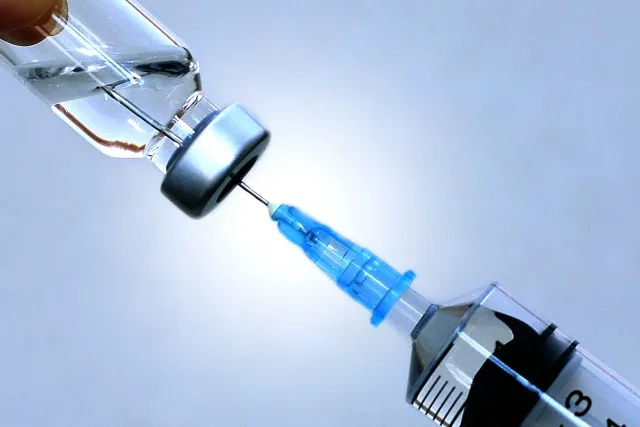Summary of this article
Early detection and accurate diagnosis are critical for anyone concerned about cancer risk, and CTCs (Circulating Tumor Cells) play an important role in cancer diagnosis and treatment. In this article, the relationship between CTCs and cancer diagnosis will be discussed in detail, including mechanisms, detection methods, clinical applications, and future prospects.
What is CTC?
Circulating Tumor Cells (CTCs) are tumor cells that are present in the blood of cancer patients. Normally, cancer cells remain at a specific site in the body, but some cancer cells flow out into the bloodstream and spread throughout the body. These Circulating Tumor Cells are an important indicator of metastatic cancer progression.
Relationship between CTC and Cancer Diagnosis
1. Early detection and Diagnosis
CTCs have great potential for early detection of cancer. Detection of CTCs in blood can rapidly confirm the presence of cancer and initiate early treatment. Compared to conventional cancer testing methods (e.g., tissue biopsy and imaging tests), the blood CTC test is non-invasive and less burdensome to the patient.
2. Monitoring of Cancer Progression
By monitoring the number and characteristics of CTCs, the progress of cancer and the effectiveness of treatment can be evaluated. By tracking changes in CTCs before and during treatment, the effectiveness of treatment can be confirmed in real time, which is useful for reviewing the treatment plan.
3. Prediction of Recurrence and Metastasis
CTCs are also useful in predicting cancer recurrence and metastasis. Post-treatment CTC testing can detect early signs of recurrence or metastasis. This allows prompt action to be taken and is expected to improve patient prognosis.
4. Promotion of Personalized Medicine
Analysis of CTCs provides information on the genetic characteristics of cancer cells and drug resistance. This enables “personalized medicine,” in which the optimal treatment is selected for each individual patient. Personalized medicine aims to provide effective treatment and minimize side effects.
CTC Detection Methods
1. Immuno-Capture Method
The immunocapture method uses antibodies against specific proteins present on the surface of CTCs to capture CTCs. This method can detect CTCs with high accuracy, but may miss CTCs that do not have a specific protein.
2. Microfluidics Method
The microfluidics method uses the physical characteristics (size and shape) of CTCs to separate them while flowing a blood sample through a microchannel. This method is expected to be used in clinical practice because of its ability to rapidly separate CTCs.
3. Genetic Analysis Methods
The genetic analysis method identifies and characterizes cancer cells by analyzing the genes for CTCs. This method can provide information on genetic mutations and drug resistance in cancer as well as the detection of CTCs.
4. Flow Cytometry
Flow cytometry is a technique that measures the physical and chemical properties of cells, allowing rapid and accurate analysis of cells in blood for the detection of CTCs. This method is suitable for clinical applications because a large number of samples can be processed in a short time.

Evolution of CTC Detection Technology
1. Evolution of Microfluidics Technology
Microfluidics technology has revolutionized CTC detection in the 21st century. This technique involves flowing a blood sample through a microchannel and using the physical characteristics (size and shape) of CTCs to separate them. Microfluidics technology has enabled rapid and efficient detection of CTCs.
2. Introduction of Next-Generation Sequencing Technology
The introduction of next-generation sequencing technology has made genetic analysis of CTCs possible. This has advanced “personalized medicine,” in which the genetic characteristics and mutations of CTCs are analyzed in detail to select the optimal treatment for each individual patient.
3. Widespread Use of Liquid Biopsy
Liquid biopsy is a non-invasive testing method that analyzes CTCs and cfDNA (circulating tumor DNA) in the blood. Liquid biopsy is very useful for early detection of cancer and monitoring treatment efficacy.
Clinical Application of CTC and its Significance
1. Early Detection and Diagnosis
CTC testing has great potential for early detection of cancer. Detecting CTCs in a blood test can quickly confirm the presence of cancer and initiate early treatment. Especially for high-risk patients and those who require regular monitoring, CTC testing is an important tool.
2. Monitoring of Treatment Efficacy
By monitoring the number and characteristics of CTCs, the effectiveness of treatment can be evaluated. By tracking changes in CTCs before and during treatment, the effectiveness of treatment can be monitored in real time, helping to revise the treatment plan. This can increase the success rate of treatment and minimize side effects.
Prediction of Recurrence and Metastasis
CTCs are also useful in predicting cancer recurrence and metastasis. Post-treatment CTC testing can detect early signs of recurrence or metastasis. This allows prompt action to be taken and is expected to improve patient prognosis.
4. Promotion of Personalized Medicine
Analysis of CTCs provides information on the genetic characteristics of cancer cells and drug resistance. This enables “personalized medicine,” in which the optimal treatment is selected for each individual patient. Personalized medicine aims to provide effective treatment and minimize side effects.
Challenges and Future Prospects for CTC Inspections
1. Improved Detection Accuracy
The biggest challenge in CTC testing is the accuracy of detection; since CTCs are very scarce in blood, highly accurate detection technology is required. It is hoped that future research will lead to the development of even more accurate detection techniques.
2. Need for Standardization
Standardization of CTC testing is another important issue. Lack of uniformity in detection and analysis methods can lead to variations in interpretation of results. Standardized testing protocols need to be established.
3. Insurance Coverage and Dissemination
At this time, CTC testing is often not covered by insurance, but may be in the future. If covered by insurance, many patients will be more likely to undergo CTC testing, and early detection of cancer and monitoring of treatment efficacy will become more common.
Conclusion
Circulating Tumor Cells (CTCs) play a critical role in the early detection of cancer and monitoring of treatment efficacy; advances in CTC detection technology have dramatically improved the accuracy and efficiency of cancer diagnosis and treatment. With the widespread use of liquid biopsy, CTC testing has become an important tool for cancer diagnosis.
For people concerned about their risk of cancer, CTC testing has great potential for early detection, evaluation of treatment efficacy, and prediction of recurrence and metastasis. With future technological advances and standardization, CTC testing is expected to become even more common and to help in the treatment of cancer.
CTC Testing at Hiro Clinic
At Hiro Clinic, we offer cutting-edge CTC testing. By detecting Circulating Tumor Cells (CTCs) in the blood, we support the early detection of cancer and the monitoring of treatment effectiveness. This non-invasive blood test is characterized by minimal patient burden. With the latest technology and expertise, we provide reassurance and reliable medical services to those concerned about cancer risks.
Supervisor of the article

Dr. Hiroshi Oka
Graduated from Keio University, Faculty of Medicine
Doctor of Medicine
Medical Doctor



